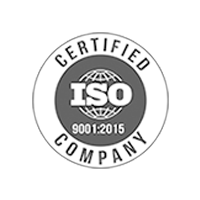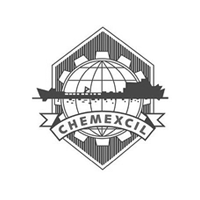PEPPERMINT OIL

OVERVIEW
Peppermint (Mentha piperita ) belongs to the Lamiaceae family and grows throughout North America, Asia, and Europe. The United States is responsible for producing 75% of the world's supply of peppermint. It is an aromatic perennial plant that grows to a height of about 3 ft. It has light purple flowers and green leaves with serrated edges. The plant is harvested when the oil content is highest. When ready for harvest, it is always collected in the morning, before noon sun reduces the leaf essential oil content. This generally takes place shortly before the plant blooms, which occurs in the summer (July through August) or during dry, sunny weather.
The aroma of Peppermint Essential Oil is familiar and pleasant to most. It is very intense and is far more concentrated than most other steam distilled essential oils. At low dilutions, it is fresh, minty and quite uplifting.The essential oil contains the principal active ingredients of the plant: menthol, menthone, and menthyl acetate.Menthol and menthone in particular are antiseptic, anesthetic, anti-inflammatory, and anti-viral.
Menthyl acetate is responsible for peppermint's minty aroma and flavor. Menthol, peppermint's main active ingredient, is found in the leaves and flowering tops of the plant. It provides the cool sensation of the herb.
The menthol content of peppermint oil determines the quality of its essential oil. This varies depending upon climate, habitat, and where the peppermint is grown. For instance, American peppermint oil contains 50–78% menthol, while English peppermint oil has a menthol content of 60–70%. Japanese peppermint oil contains 85% menthol. Peppermint also contains vitamins A and C, magnesium, potassium, copper, iodine , silicon, iron, and sulfur.
Peppermint is one of the most popular flavoring agents. It can also be consumed in a variety of ways. You can make peppermint tea with the leaves, and you can also use peppermint essential oil, oil capsules, and tablets. The capsules and tablets are usually coated in a substance called enteric, which helps prevent the peppermint oil from causing heartburn. These capsules are usually what people use to treat IBS.
Many products contain peppermint, including chewing gum, mints and candies, ice cream and other sweets, tobacco, toothpaste, mouthwash, cough drops, teas, alcoholic liqueurs, and digestive aids . It is also used to scent soaps, perfumes, detergents, lipsticks and other cosmetics, and is an ingredient in many over-the-counter medications. Therapeutically, peppermint is used to treat many ailments of the skin, circulatory system, respiratory system, digestive system, immune system, and nervous system. Peppermint and its oils help with intestinal function.
APPEARANCE
Colourless to pale yellow liquid
ODOUR
Refreshing, sharp, strongly minty odour.
ORIGINAL PLANT
Mentha piperita
CAS NUMBER
8006-90-4 ; 84082-70-2
FEMA NUMBER
2848
EINECS NUMBER
282-015-4
PRODUCT CODE
AFE003017
SYNONYM
Mentha balsamea Wild
PARTS USED
Leaves & flower top
EXTRACTION METHOD
Steam Distillation
SHELF LIFE
24 Months
FLASHPOINT
78°C
SPECIFIC GRAVITY
0.881-0.905 @ 20°C
REFRACTIVE INDEX
1.477-1.489 @ 20°C
QUALITY
100% Pure and Natural
SOLUBILITY
Insoluble in water
SINUS CARE AND OTHER RESPIRATORY BENEFITS
With its strong, minty scent, peppermint oil has antibacterial, anti-inflammatory, antispasmodic, and expectorant properties, all of which can help relieve sinus congestion and pressure. Inhaling diffused peppermint oil can help to unclog your sinuses and offer relief from a scratchy throat. It is one of the best essential oils for colds, the flu, cough, sinusitis, asthma, bronchitis and other respiratory conditions.
ALLEVIATES HEADACHES
Peppermint oil is terrific to keep on hand at your desk or in your purse, especially if you are prone to headaches. Peppermint oil has a tingling or cooling effect on the skin that can cause a slight numbing effect. It has the ability to improve circulation, soothe the gut and relax tense muscles; conditions that can cause tension headaches or migraines, making peppermint oil one of the best essential oils for headaches.
FRESHEN BREATH AND SUPPORTS ORAL HEALTH
Peppermint oil has been used to naturally freshen breath, a rinse of peppermint oil diluted in water can be a great way to quickly relieve bad breath or to get rid of bad tastes.Peppermint oil is the most effective in killing what are called anaerobic bacteria (bacteria that thrive in a low oxygen environment) such as the bacteria that causes gum disease. It is an amazing treatment for post tooth-extraction. It helps prevent the swelling in connective tissues and reduces bleeding too. The vitamins and minerals work together to fortify enamel and ensure strengthening teeth and gums.
PROMOTES HAIR GROWTH AND REDUCE DANDRUFF
Essential oils have been used for thousands of years in some parts in the world to promote hair growth. Peppermint oil solution promotes hair growth. Menthol, the main component in peppermint oil also imparts a freshened smell and tingly sensation on the skin and scalp, it is a powerful antiseptic agent, so it may help to remove germs that may buildup in your hair. It has been shown to increase blood flow to the area where it is applied.
Peppermint oil is used in many high-quality hair care products because it can naturally thicken and nourish damaged hair. It can be used as a natural treatment for thinning hair, and it helps to stimulate the scalp and energize your mind.
OTHER BENEFITS
Relieve muscle and joint pain, seasonal allergy relief, makes skin brighter, eases digestion.







